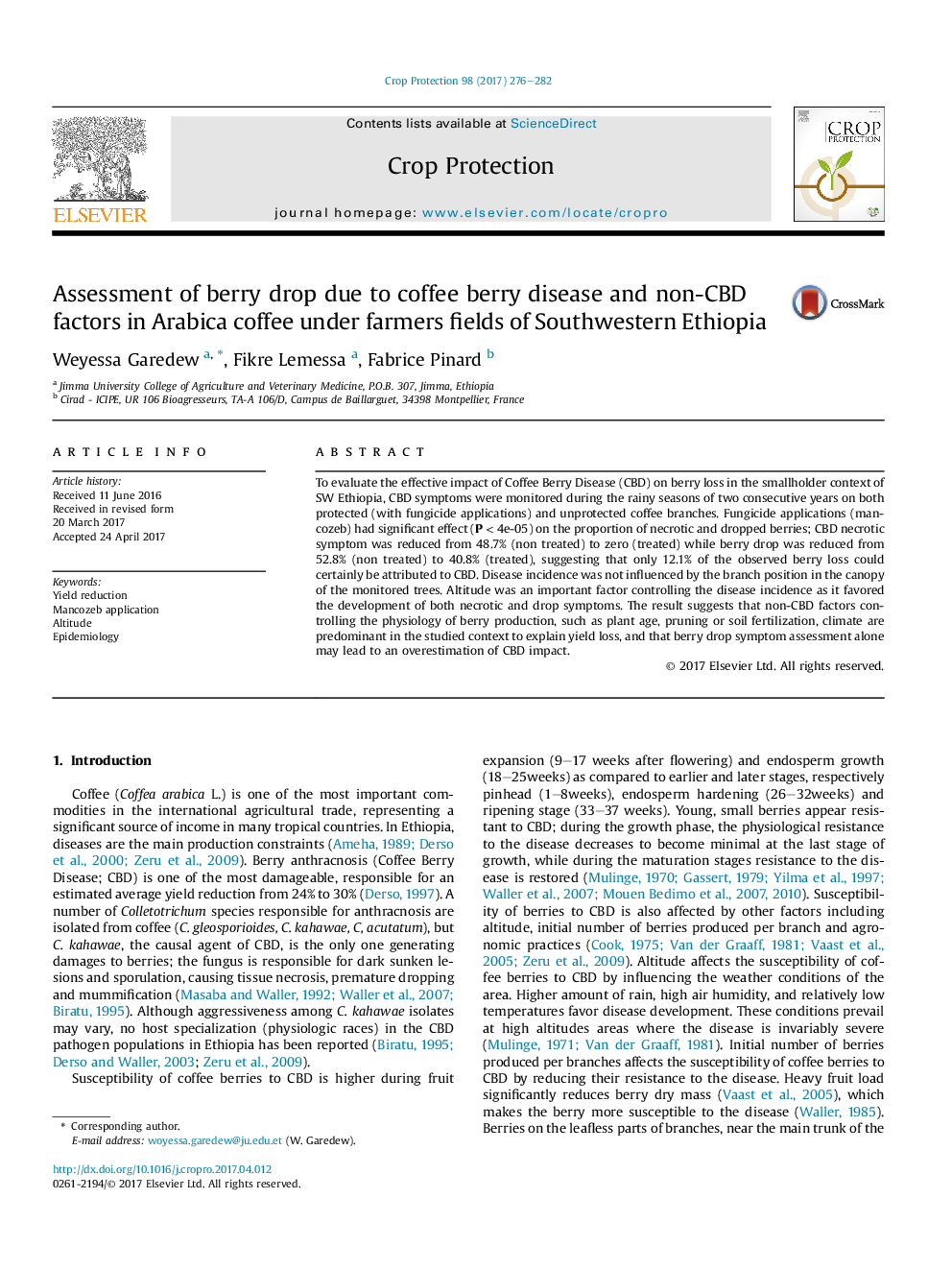| Article ID | Journal | Published Year | Pages | File Type |
|---|---|---|---|---|
| 5760910 | Crop Protection | 2017 | 7 Pages |
Abstract
To evaluate the effective impact of Coffee Berry Disease (CBD) on berry loss in the smallholder context of SW Ethiopia, CBD symptoms were monitored during the rainy seasons of two consecutive years on both protected (with fungicide applications) and unprotected coffee branches. Fungicide applications (mancozeb) had significant effect (PÂ <Â 4e-05) on the proportion of necrotic and dropped berries; CBD necrotic symptom was reduced from 48.7% (non treated) to zero (treated) while berry drop was reduced from 52.8% (non treated) to 40.8% (treated), suggesting that only 12.1% of the observed berry loss could certainly be attributed to CBD. Disease incidence was not influenced by the branch position in the canopy of the monitored trees. Altitude was an important factor controlling the disease incidence as it favored the development of both necrotic and drop symptoms. The result suggests that non-CBD factors controlling the physiology of berry production, such as plant age, pruning or soil fertilization, climate are predominant in the studied context to explain yield loss, and that berry drop symptom assessment alone may lead to an overestimation of CBD impact.
Keywords
Related Topics
Life Sciences
Agricultural and Biological Sciences
Agronomy and Crop Science
Authors
Weyessa Garedew, Fikre Lemessa, Fabrice Pinard,
